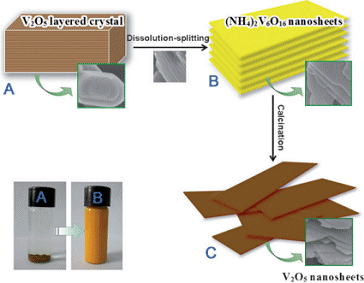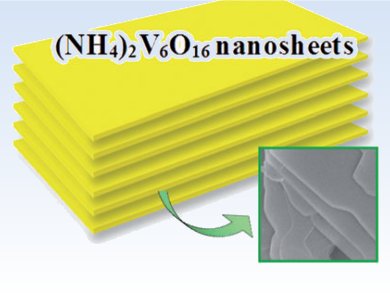Researchers from the Chinese Academy of Sciences have been working towards meeting the great challenges faced in the development of next-generation lithium-ion batteries. Xin-bo Zhang and co-workers have proposed a facile, effective, and scalable dissolution-splitting method to synthesize large-area V2O5 nanosheets with high purity using low-cost raw materials (pictured).

The resultant nanosheets have interesting electrochemical features including greatly enhanced lithium storage properties in contrast to their parent bulk crystal. They can deliver a high power density of 15.6 kWkg–1 while the energy density remains as high as 260 Whkg–1, which would bridge the performance gap between batteries and supercapacitors. The nanosheets also have very high reversible capacities (290 mAhg–1), and good cycling stability and rate performance (144 mAhg–1 at 10C and 95 mAhg–1 at 20C) over a wide temperature range.
The authors reveal that “The proposed synthetic strategy may be easily extended to other layered materials which can be used in broad fields including catalysis and sensors”.
Images: © Wiley-VCH
- Facile and Low-Cost Synthesis of Large-Area Pure V2O5 Nanosheets for High-Capacity and High-Rate Lithium Storage over a Wide Temperature Range,
Z.-l. Wang, D. Xu, L.-m. Wang, X.-b. Zhang,
ChemPlusChem 2012.
DOI: 10.1002/cplu.201100051
This article is available for free as part of the ChemPlusChem free trial.



